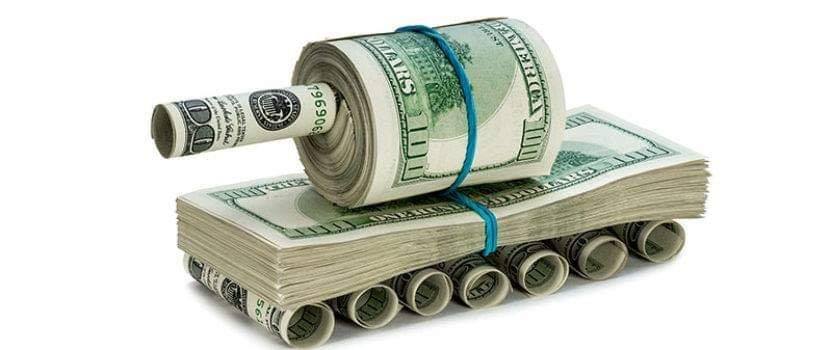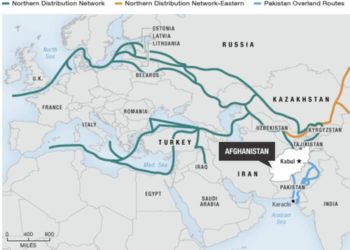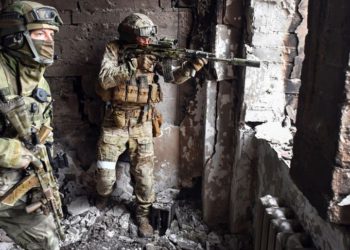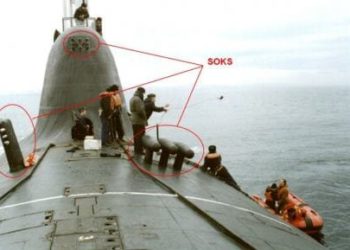Budget: How much Russia really spends on Defence. Russia is a divisive topic. Some hawks describe the country as a meddling entity armed to the teeth and dangerous. It is part of the new axis of evil, is aggressive and must be contained. To do so, the West in general and the US in particular, must increase their defence budget and park as much troops and hardware at Russia’s borders to deter Moscow. At the same time, Moscow is ridiculed as an economic midget in the global arena, a declining, weak country with the economic output of Italy, or, as McCain once said, “A gas station masquerading as a country”. So… Which is which?
Let’s have a look at the Russian economy: First, Russia’s main exports: Petroleum products sales represent between 30% and 45% of the Russian budget. Iron and steel represent Russia’s second largest export, followed by gems (including diamonds), precious metals, wood, cereals, aluminium, electrical machinery and copper. Russia also produces and exports porcelain, crystals and textiles.
Russia’s domestic market is also worth having a look at: There are 144 million people in Russia. The population is well educated: 94% of adults have completed upper secondary education (higher than the OECD average of 78%). Indeed, according to the Statistics of UNESCO Institute, Russia contributes the highest number of engineering graduates per year (in the world): The country accomplishes almost half a million engineering graduates annually. 41% of people working in scientific research in Russia are female, compared to a world average of 29%. A quick snapshot of the Russian society shows that 23.8% of the population is classed as skilled professionals while 15.3% work in sales and services and 13% are skilled workers. Furthermore, the Russian population is a connected, outward looking one, with 118 million active users on the Internet (out of 144 million). this earns the Russia the seventh place among the countries with the highest number of users globally.
The (PPP) GDP per capita in Russia is equivalent to USD 29,181. That is $4423 below the OECD average of USD 33 604. This places Russia at the 57th position (out of 185 countries). So while Russia isn’t Qatar (1st place with a (PPP) GDP per capita equivalent to $128,647), it is still ahead of many countries including China (79th position / $16,842) and India (122nd place / $7,166).
Russian businesses produce goods and services to fulfill the needs of the population of the country. Goods produced vary from automobile and trucks (AvtoVAZ, GAZ, KAMAZ, UAZ) to agricultural machinery (RADOGOST-MASH), rolling stock/train manufacturers (Transmashholding), kitchen and white goods makers (Merloni, Bork, Vestel) and Hi-Fi equipment (ALEKS audio). One can add a civilian aircraft manufacturing base (Tupolev, Sukhoi, Irkut) and around 80 shipyards and marine design bureaus.
Looking at the Russian defence industry, Russia produces everything from gloves and bullet-proof vests to helmets, night-vision goggles, hand guns, assault rifles and heavy machine guns. Russia also produces 4X4 vehicles, MRAPs, engineering vehicles, IFVs, APCs, tanks, SPAAGs, SAM batteries, EW modules and vehicles; radars, ATGMs, MANPADS, AshMs, cruise missiles, ballistic missiles and ICBMs. The list carries on with helicopters, fighter jets, cargo planes, AWACS, UAVs and supersonic bombers. Likewise, Russia manufactures diesel submarines, nuclear submarines, SLBMs, landing ships, frigates and nuclear powered icebreakers.
73% of the Russian population lives in urban areas. If one looks at the average Russian household’s budget, one can see that 29% of income is dedicated to eating out, leisure and culture, alcohol and tobacco as well as transport. All the data above make Russia a modern consumers’ society far from the backward country it is sometimes caricatured as. It certainly looks like Russia is slightly more than a mere petrol station.
When the Russian Federation budget develops a surplus (+2.9% in 2018 and +1.8% in 2019), said surplus is saved into Sovereign funds. At the end of 2020, Russian international reserves stood at $595 billion, including $457 in Forex reserves. $138 billion of those international reserves were made of gold (2299 tons) and Russia’s main foreign currency reserve is labelled in Euro ($166 billion). Russia is one of the best performing countries in the world when talking about government debt to GDP ratio: 12%. For comparison’s sake, Euro area’s ratio is 77%, the UK stands at 87%, the United States at 107% and Japan at 237%!
Pre-Covid-19, Russia’s nominal GDP stood at $1.630 trillion, making this huge country the 11th (or 12th, depending on who you ask) biggest economy in the world. Following the same calculation, Russian defence related expenditures came up at $64.4 billion. That is 3.9% of GDP, which would be great if Russia was part of NATO. It is also a very sustainable ratio, much more so than the ratio adopted by the Soviet Union, when the Defence budget ate anywhere between 10% to 20% of the country’s GDP!! $64.4 billion also places Russia as the 6th biggest global spender in defence expenditures.
However… Nominal GDP is not the most accurate method of calculation when applied to comparing budgets: It uses the current exchange rates for national currencies, converted in Dollar. Currencies are sometimes subjected to wild variations and manipulations. The value of a currency converted in dollar often distorts the picture. Looking at everything Russia produces and manufactures and looking at the size of its armed forces and military investments, both GDP and Defence budget look wrong when converted straight into dollars.
This is why several organisations use the Purchasing Power Parity method when calculating just this type of thing. What is PPP? According to Wikipedia, “PPP takes into account the relative cost of local goods, services and inflation rates of the country, rather than using international market exchange rates which may distort the real differences in per capita income”.
Following this method, Russia’s PPP GDP stands at $4.213 trillion, making it the 6th largest economy in the world, just behind Germany. Using the same PPP concept, Russia’s current military expenditures stand at anywhere between $88billion and $98 billion, placing it at the third place, globally, just behind China. Now, this looks a little more accurate. Still, as far as military spending is concerned, Russia is far behind China and the US: Washington spent $649 billion in defence related expenditures in 2018 and Beijing $250 billion. It means that if one combines both the American and Chinese defence budgets for 2018, they represent 50% of all military expenditure worldwide for that year!










